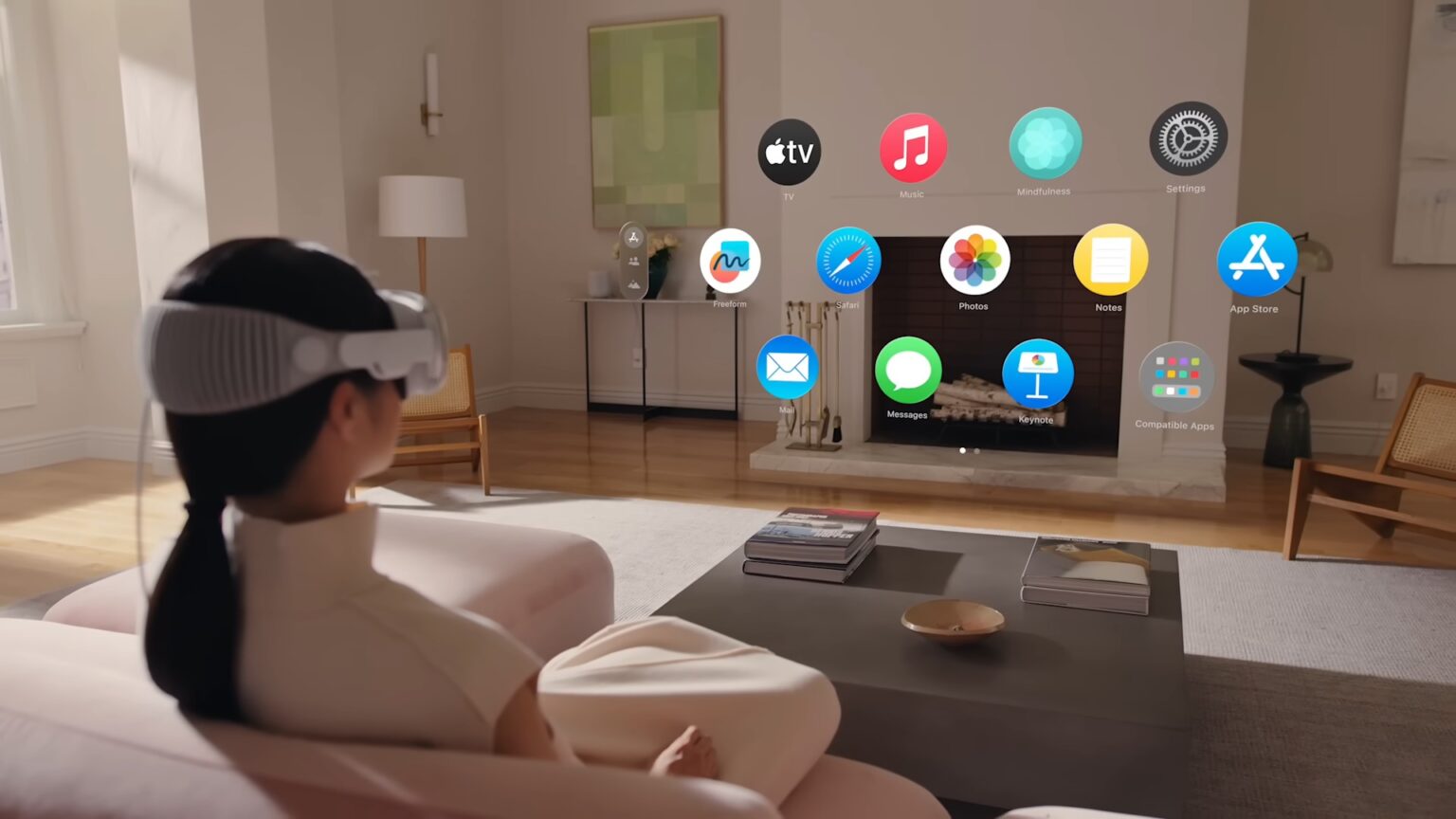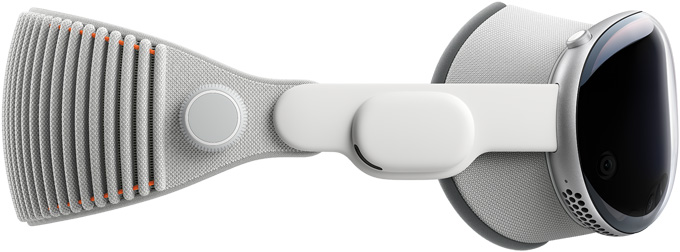
The Apple Vision Pro is one of the most ambitious and highly anticipated products from Apple, officially announced in June 2023 during the Worldwide Developers Conference (WWDC). It’s a mixed reality (MR) headset that combines virtual reality (VR) and augmented reality (AR) technologies, designed to create immersive experiences with a blend of both digital and physical worlds. Here’s a detailed breakdown of the Apple Vision Pro, its features, and its potential impact on the tech landscape:
- Overview:
The Apple Vision Pro is an AR/VR headset that aims to deliver a fully immersive, mixed-reality experience. Unlike traditional AR headsets, the Vision Pro is built to integrate seamlessly with Apple’s ecosystem of devices, enabling a variety of applications in both the entertainment and productivity sectors. It represents Apple’s first major foray into the spatial computing space, designed for personal use, entertainment, and even professional applications. - Key Features and Specifications:
a. Display:
Dual 4K Micro-OLED Displays:
The Vision Pro boasts two high-resolution displays, one for each eye, offering an impressive 4K resolution per eye (which equals a total of 23 million pixels). This provides an incredibly sharp and immersive visual experience, crucial for AR and VR applications.
Realistic Color and Brightness:
The display has been designed for high dynamic range (HDR), offering exceptional color reproduction and brightness, which is critical for mixed reality applications. This ensures the real world and virtual elements blend seamlessly.
b. Design and Build:
Lightweight Materials:
Apple used lightweight materials to keep the Vision Pro relatively comfortable despite its high-tech internals. The device is crafted from glass and aluminum, and it’s designed to feel natural and less bulky compared to other mixed-reality headsets.
Modular and Adjustable Fit:
The Vision Pro features an adjustable fit system to ensure comfort for different head shapes. It also includes a soft foam lining for a better fit around the face.
Ventilation System:
Built-in vents to prevent overheating during long use sessions, maintaining comfort over extended periods.
c. Eye and Hand Tracking:
Eye-Tracking Technology:
The headset uses advanced eye-tracking sensors to detect where the user is looking, allowing the system to respond to eye movements and enable features like foveated rendering (rendering high detail where the eye is focusing and lower detail in the periphery to save processing power).
Hand Gesture Controls:
The Vision Pro features hand gesture recognition, which allows users to interact with the virtual environment using intuitive gestures (like pinching or swiping). This eliminates the need for controllers, creating a more natural and intuitive interface.
d. Spatial Audio and 3D Sound:
Immersive Spatial Audio:
The device uses spatial audio to create an immersive sound experience that moves with the user’s head. This means sounds will change as you look in different directions, improving immersion in virtual environments or videos.
Personalized Sound Profiles:
Through integration with the user’s personal audio preferences, the Vision Pro adapts to the individual’s hearing needs, creating a custom sound experience.
e. Chip and Computing Power:
Apple M2 Chip:
The Vision Pro is powered by Apple’s M2 chip, the same chip used in the MacBook Air and MacBook Pro. The M2 provides the high performance needed for real-time rendering of complex AR and VR environments.
R1 Chip for Real-Time Processing:
Apple also includes a dedicated R1 chip that handles real-time processing of inputs from the cameras, sensors, and other inputs to deliver a smooth and responsive experience. - Software and User Interface:
a. VisionOS (Apple’s New Operating System):
The Vision Pro runs on VisionOS, a new operating system designed specifically for spatial computing. It provides a seamless interface between the physical world and the digital world, integrating AR and VR experiences with Apple’s ecosystem.
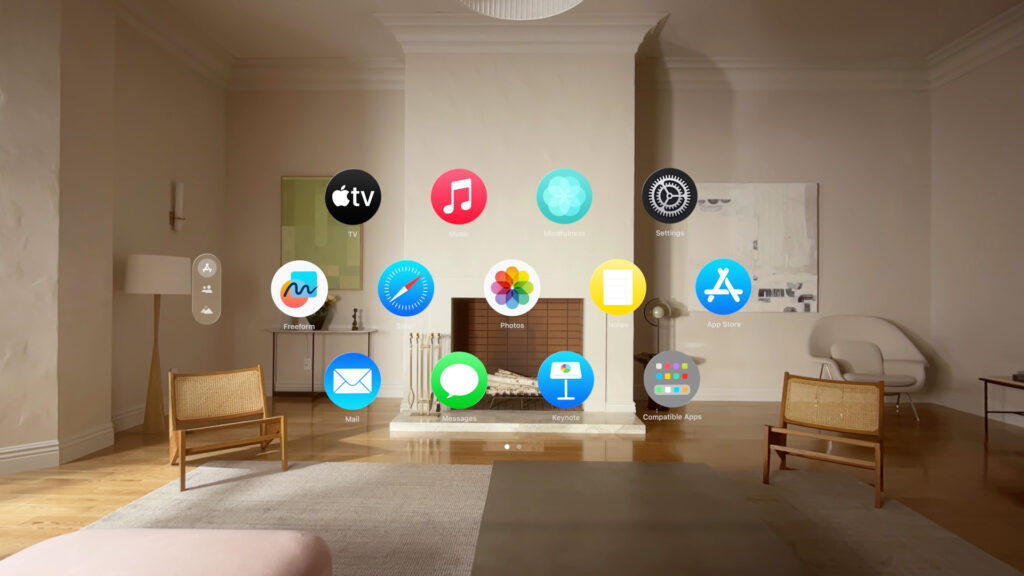
Apps and Experiences:
VisionOS supports a wide range of apps, including productivity tools, entertainment apps, and gaming experiences. VisionOS is compatible with existing macOS and iOS apps through its spatial layer, and users can multitask using multiple virtual windows.
Multitasking:
The Vision Pro allows users to manage multiple apps simultaneously in an immersive 3D space, similar to how you would manage multiple windows on a Mac but with full immersion.
Digital Environments:
Users can create their own virtual environments, transforming their physical space into digital landscapes, such as virtual office setups or immersive movie theaters.
b. 3D Interaction with Content:
The Vision Pro allows users to interact with digital content in 3D space, creating a sense of depth and presence. This makes activities like watching videos, browsing photos, or browsing websites feel more lifelike and dynamic.
c. Apple Ecosystem Integration:
Seamless Integration with Apple Devices:
Vision Pro is deeply integrated into the Apple ecosystem. For example, users can interact with Mac computers, iPhones, and iPads directly through the Vision Pro, extending the device’s capabilities.
FaceTime and Virtual Presence:
One of the standout features is FaceTime integration. The Vision Pro allows for spatial video calls, where the user’s 3D avatar appears as if they are sitting across from you, which adds a sense of physical presence to virtual meetings.
- Use Cases:
a. Entertainment:
Immersive VR Experiences:
Vision Pro offers VR experiences like gaming, virtual tours, and movies in full 3D. Apple has collaborated with developers to bring cinematic and 3D content to the platform.
Spatial Movie Watching:
Users can enjoy 180-degree or 360-degree video content in a completely immersive environment, providing a theater-like experience from the comfort of their home.
b. Productivity:
Virtual Workspaces:
Apple Vision Pro transforms the way you work. With the ability to create virtual screens and multiple windows in 3D space, users can increase their productivity by managing various tasks simultaneously in a more spatially intuitive way.
Remote Work and Collaboration:
Vision Pro’s FaceTime and collaboration tools make it ideal for remote work, enabling more immersive and productive meetings with colleagues and clients.
c. Health and Fitness:
AR for Health and Fitness Apps:
With the Vision Pro, you can access fitness and wellness apps that integrate AR, such as virtual yoga or exercise routines, that track your movements and guide you through workouts. - Privacy and Security:
Personal Data and Privacy:
Apple has stressed that privacy is a priority with the Vision Pro. The device uses a secure authentication system (likely involving Face ID or iris scanning), ensuring that personal data is stored securely on the device.
Digital Detox and Personal Boundaries:
Vision Pro has features to help users manage their time in VR/AR, offering reminders or boundaries to prevent long, uninterrupted usage sessions. - Pricing and Availability:
Price:
The Apple Vision Pro is priced at $3,499. This high price point places it in the premium market, designed primarily for early adopters, professionals, and businesses that can benefit from spatial computing.
Availability:
The Vision Pro is expected to be released in early 2024, with initial availability likely limited to certain regions or markets. - Impact and Future Potential:
a. Redefining Computing:
The Apple Vision Pro represents a leap toward spatial computing, where the boundaries between digital and physical environments blur. It’s Apple’s vision of the future of computing, where users no longer interact with devices through a traditional screen but through immersive, spatially aware experiences.
b. Competition and Market Trends:
The Vision Pro faces competition from other tech giants like Meta’s Quest series, Microsoft’s HoloLens, and Sony’s PlayStation VR. However, Apple’s unique positioning within its ecosystem, along with its focus on premium user experience, gives it a distinct advantage, especially in terms of integration with other Apple devices.
Conclusion:
The Apple Vision Pro is a game-changing device that aims to reshape how we interact with technology, offering both immersive VR and seamless AR capabilities. With its cutting-edge display, powerful performance, and deep integration with Apple’s ecosystem, it’s setting the stage for a new era of spatial computing. While its high price may limit initial adoption, its impact on sectors like entertainment, productivity, and health could be significant in the coming years. Apple has positioned the Vision Pro as not just a new gadget but as a foundational technology for the future of computing.

Pros of the Apple Vision Pro
- Stunning Display and Visual Experience
4K Micro-OLED Displays per Eye:
The Vision Pro offers an extraordinary 4K resolution per eye with a total of 23 million pixels, which is far superior to most current VR/AR headsets. This high pixel density leads to incredibly sharp and immersive visuals.
HDR and High Brightness:
The display supports high dynamic range (HDR), delivering rich colors, deep blacks, and vibrant images, whether you’re in a VR environment or interacting with augmented content in the real world.
Realistic Depth and Clarity:
The AR experience feels highly realistic thanks to Apple’s advanced optics and deep integration with its spatial computing platform. - Advanced Eye and Hand Tracking
Eye-Tracking:
The Vision Pro uses advanced eye-tracking sensors to detect where the user is looking, enabling foveated rendering, which adjusts the resolution dynamically to provide high-quality graphics only in the areas you’re focusing on. This not only improves performance but also conserves battery life.
Hand Gesture Controls:
The device recognizes hand gestures such as pinching, swiping, and tapping, allowing users to interact with virtual objects without the need for external controllers. This makes the user experience much more intuitive. - Seamless Integration with Apple Ecosystem
Apple’s VisionOS:
The Vision Pro runs on VisionOS, Apple’s operating system tailored for spatial computing. It integrates seamlessly with other Apple devices, such as Macs, iPhones, and iPads, allowing for a connected experience that feels familiar to Apple users.
Multitasking in 3D Space:
The Vision Pro allows users to create virtual screens and multitask in a spatial environment. This is especially useful for professionals who need multiple displays for productivity or for those wanting to simulate an immersive workspace. - Immersive Audio Experience
Spatial Audio:
The Vision Pro includes built-in spatial audio that adjusts based on your head movements, creating a 3D sound experience. This makes media consumption, like watching films or playing games, far more immersive.
Personalized Sound Profiles:
The device tailors the audio experience based on your individual hearing preferences and environmental factors, ensuring optimal sound clarity and richness. - Enhanced Productivity and Workflows
Virtual Workspaces:
The Vision Pro allows users to create their own personalized virtual workspaces. You can manage multiple virtual screens, interact with apps in 3D space, and multitask in a way that isn’t possible with traditional displays.
Remote Collaboration:
Through integrated FaceTime and spatial video features, users can engage in remote meetings with lifelike avatars, making remote collaboration more natural and immersive. - Premium Build Quality
Sleek Design and Materials:
The device is made from lightweight glass and aluminum, giving it a high-end, premium feel. The attention to design and comfort is evident, especially with features like a customizable fit and soft foam lining around the face.
Comfort and Fit:
Apple has placed a strong emphasis on ensuring the headset is comfortable for long usage. It includes adjustable straps and a ventilation system to prevent overheating during extended sessions. - Next-Level Augmented Reality (AR) Experience
Seamless AR and VR Integration:
Unlike some previous AR and VR devices, the Vision Pro combines both worlds seamlessly. You can switch between immersive VR experiences and interactive AR environments with ease, allowing for highly dynamic use cases in entertainment, productivity, and education.
Cons of the Apple Vision Pro
- High Price Point
Expensive at $3,499:
The Vision Pro’s price of $3,499 makes it a premium device, limiting its accessibility to early adopters, professionals, and businesses. This price is significantly higher than most other AR/VR devices on the market, making it out of reach for the average consumer.
Price-Performance Ratio:
While the technology is cutting-edge, its high cost might not justify the value for users who are looking for a more affordable AR/VR experience, especially if they’re not using it for professional or specialized applications. - Battery Life Limitations
2-Hour Battery Life:
Despite the impressive tech packed into the device, the Vision Pro is limited to just 2 hours of battery life on a single charge (with an external battery pack). This makes it impractical for long, uninterrupted sessions, especially for activities like immersive VR gaming or extended professional use.
External Battery Pack:
The external battery pack, while necessary for extended use, also creates additional bulk and can limit the mobility of the device. - Potential for Motion Sickness
AR/VR Fatigue:
Like with many VR/AR devices, some users may experience motion sickness, especially if they’re not used to the immersive nature of mixed reality. This could be due to the disparity between what your eyes are seeing and what your inner ear is feeling, leading to discomfort over extended sessions.
Foveated Rendering and Latency:
While foveated rendering improves performance, the technology isn’t perfect and could lead to occasional visual artifacts or latency issues that could contribute to discomfort for some users. - Heavy and Bulky Design (for some users)
Weight and Comfort:
While Apple has worked to make the device lighter compared to other headsets, it is still bulky compared to traditional glasses or even some VR headsets. This can lead to neck strain or discomfort for some users over extended periods of use, particularly since it’s a headset that sits on your face.
Fit for Certain Head Shapes:
Despite the adjustable design, it may not provide the most comfortable fit for every individual. Users with larger or smaller head sizes may struggle to achieve the perfect fit. - Limited App Ecosystem (at Launch)
New and Uncertain Developer Support:
As the Vision Pro is a new platform, its app ecosystem will likely take time to grow. At launch, there may be limited apps designed specifically for VisionOS, and many existing macOS and iOS apps will require adjustments to take full advantage of the mixed-reality features.
Developer Adoption:
While Apple’s history with developer tools is strong, transitioning to mixed reality could take some time for widespread adoption. App developers may take a while to fully tap into the Vision Pro’s capabilities. - Privacy Concerns
Constant Surveillance of Users:
The Vision Pro’s eye-tracking and facial recognition technologies may raise privacy concerns. Continuous tracking of eye movements, facial expressions, and possibly even biometric data might not sit well with all users.
Personal Data and Security:
While Apple emphasizes privacy, the idea of collecting such sensitive data raises the possibility of potential breaches or misuse. Users may be uncomfortable with the notion of their actions and preferences being constantly monitored. - Not Fully Ready for Mass Consumer Adoption
Niche Market:
Given its high price, specialized use cases, and relatively new technology, the Vision Pro is likely not aimed at the mainstream consumer market just yet. It’s more geared toward early adopters, tech enthusiasts, and professionals in industries like entertainment, design, and remote collaboration.
Limited Accessibility:
The device is likely to remain a niche product for a while, limiting its reach and adoption among everyday consumers who may not be ready for or need mixed reality experiences.
Conclusion:
The Apple Vision Pro is an innovative, next-generation mixed-reality device that offers some of the most advanced AR/VR capabilities in the market today. Its combination of stunning visuals, eye and hand tracking, immersive audio, and seamless integration with Apple’s ecosystem make it a powerful tool for professionals, creatives, and tech enthusiasts.
However, the high price, limited battery life, comfort issues, and the relatively new ecosystem are significant drawbacks. While the device is revolutionary, it is likely to remain a niche product until its app ecosystem matures, battery life improves, and the price becomes more accessible.
For users who can afford it and are looking for cutting-edge mixed-reality experiences, the Apple Vision Pro could be a transformative tool. For everyone else, it might be wise to wait for the next generation of mixed-reality devices or for Apple to release a more consumer-friendly version in the future.
Unboxing and First Impressions:
From the moment you unbox the Vision Pro, you can immediately feel the level of premium craftsmanship that Apple is known for. The packaging is sleek, minimalist, and straightforward — as you’d expect from Apple. Inside, the headset itself looks stunning. It’s a clean blend of glass and aluminum, and despite the powerful tech it houses, it doesn’t feel overly bulky. The design is elegant and futuristic, almost like something straight out of a sci-fi movie.
Putting It On: Comfort & Fit:
One of the first things I noticed was how surprisingly comfortable the Vision Pro is. Despite its advanced technology and high-end build, it feels lightweight compared to other VR headsets I’ve tried. Apple has clearly put a lot of thought into ergonomics.
Adjustable Fit: The headband adjusts easily to accommodate different head sizes, and the soft foam lining around the face adds comfort, making it feel snug but not too tight.
Ventilation: I was concerned about getting too warm with extended use, but the built-in ventilation system keeps things comfortable. The headset is designed with airflow in mind, and it definitely works.
Seamless Wear: The overall experience is more akin to wearing a pair of comfortable glasses than a heavy headset. The balance between the front and rear of the headset was just right — I didn’t feel any strain on my neck, even after wearing it for a while.
Apple Vision Pro any comptitor.
Yes, Apple Vision Pro faces competition from several other mixed-reality (MR) and virtual reality (VR) headsets, each with its own strengths and market positioning. While Apple’s Vision Pro is a premium device, focused on both augmented reality (AR) and virtual reality (VR), its competitors span a range of price points, features, and use cases. Below are some of the main competitors to the Apple Vision Pro:
1. Meta Quest Pro
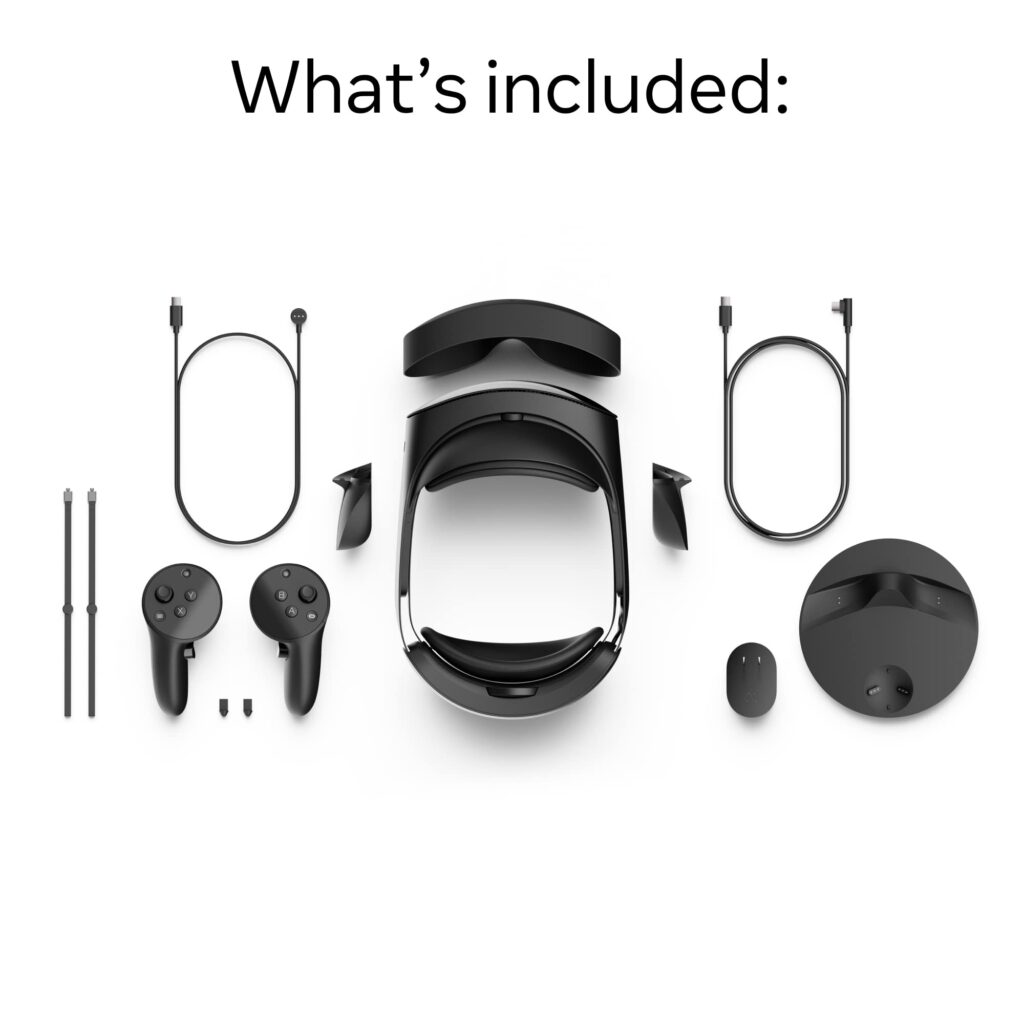
Meta (formerly Facebook) has been heavily invested in virtual and augmented reality, and their Meta Quest Pro is one of the top competitors to the Vision Pro, especially in the high-end MR space.
Price: The Meta Quest Pro is priced at around $1,499, which is still high but significantly cheaper than the Vision Pro.
Features:
The Quest Pro offers a combination of AR and VR capabilities, allowing users to switch between immersive VR environments and AR experiences.
It has eye-tracking for more realistic interactions and mixed-reality capabilities using full-color passthrough.
It has high-quality displays (1800 x 1920 resolution per eye), improved comfort features, and advanced hand tracking.
Unlike Vision Pro, which relies on a powerful external chip, the Quest Pro is a standalone device with its own processing power, including the Qualcomm Snapdragon XR2+ chip.
Pros:
Price is more accessible than the Vision Pro.
A strong focus on VR with a growing ecosystem of games and applications.
Decent mixed-reality performance with an open platform for developers.
Cons:
Resolution and field of view are not as high as the Apple Vision Pro’s 4K per eye.
Meta’s focus on social VR and gaming may limit its appeal for professional or productivity use compared to the Vision Pro’s integrated Apple ecosystem.
2. Microsoft HoloLens 2
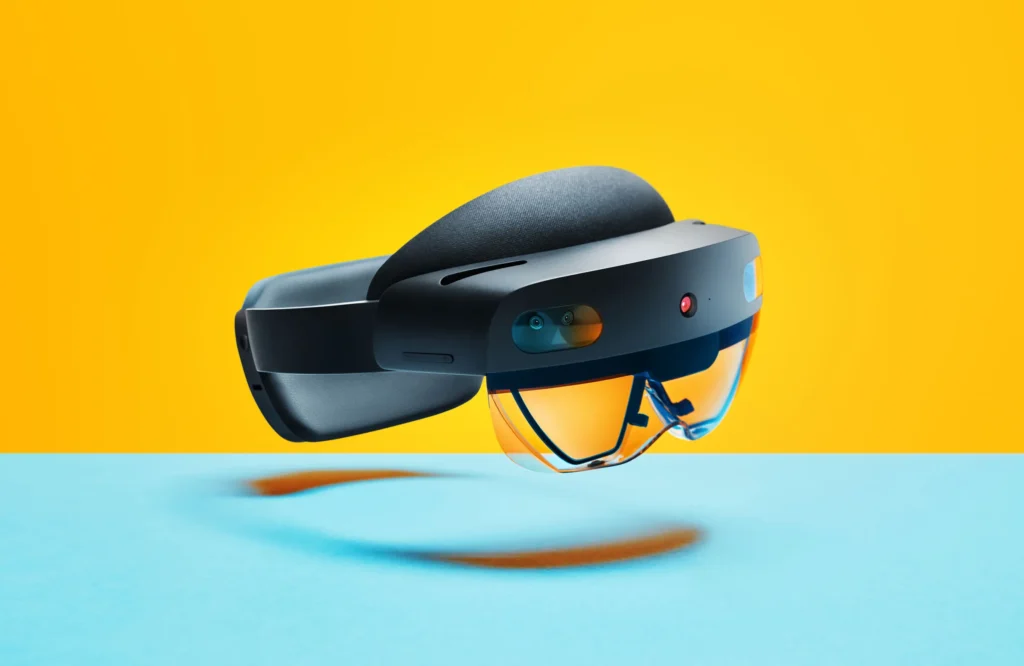
Microsoft HoloLens 2 is one of the most established names in the enterprise-grade AR space and is a direct competitor to Apple Vision Pro in terms of professional and business applications.
Price: Around $3,500, which is very close to the Vision Pro’s price.
Features:
The HoloLens 2 focuses on augmented reality and is designed for enterprise use, such as in manufacturing, healthcare, and engineering.
It offers 6DoF (Six Degrees of Freedom) tracking for spatial awareness, making it highly suitable for real-world applications.
The HoloLens 2 uses a combination of cameras and sensors to create detailed 3D holograms and interacts with physical environments.
Voice recognition and gesture controls enable hands-free operation.
Powered by Windows Holographic OS, it integrates well with Microsoft’s enterprise software like Dynamics 365 and Azure.
Pros:
The enterprise-grade features like gesture control and eye-tracking are advanced.
Strong focus on business and industrial applications.
Better suited for hands-on, professional environments.
Cons:
Limited consumer applications compared to the Vision Pro’s focus on a more general consumer audience.
Less emphasis on immersive VR experiences. The price is still quite high for general consumers.
3. Sony PlayStation VR2
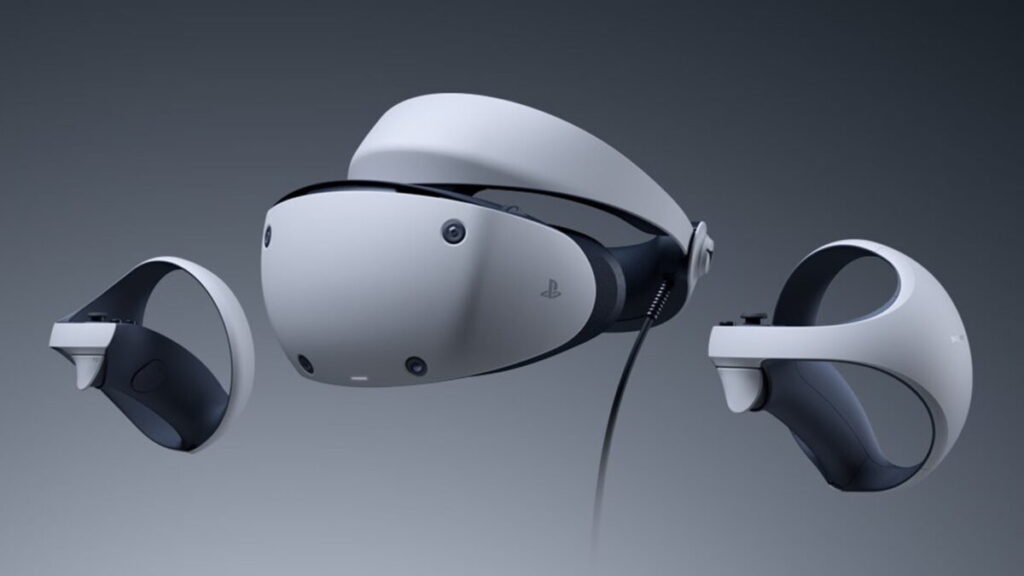
Sony’s PlayStation VR2 is a powerful competitor in the realm of immersive VR, but it is primarily targeted at gamers rather than general productivity or AR use.
Price: The PS VR2 costs $549 (plus a PS5 console, if you don’t already own one), making it far more affordable than the Vision Pro.
Features:
Designed specifically for PlayStation 5, it features 4K HDR OLED displays (2000 x 2040 resolution per eye), offering stunning visuals for gaming.
It includes eye-tracking, adaptive triggers, and haptic feedback in the controllers to enhance the gaming experience.
Inside-out tracking and 360-degree play ensure a high level of immersion in VR.
The PS VR2 has a relatively low entry price compared to Vision Pro, especially when considering it requires a PS5 console for full functionality.
Pros:
One of the best VR systems for gaming, with high-end visuals and immersive features.
Far more affordable than the Vision Pro.
Integration with PlayStation’s game ecosystem offers a vast library of content.
Cons:
Strictly a VR-only device, no AR functionality.
Limited to PlayStation users; not a standalone device and requires a PS5 to operate.
Lacks the general-purpose productivity and mixed-reality capabilities of Vision Pro.
4. HTC Vive XR Elite
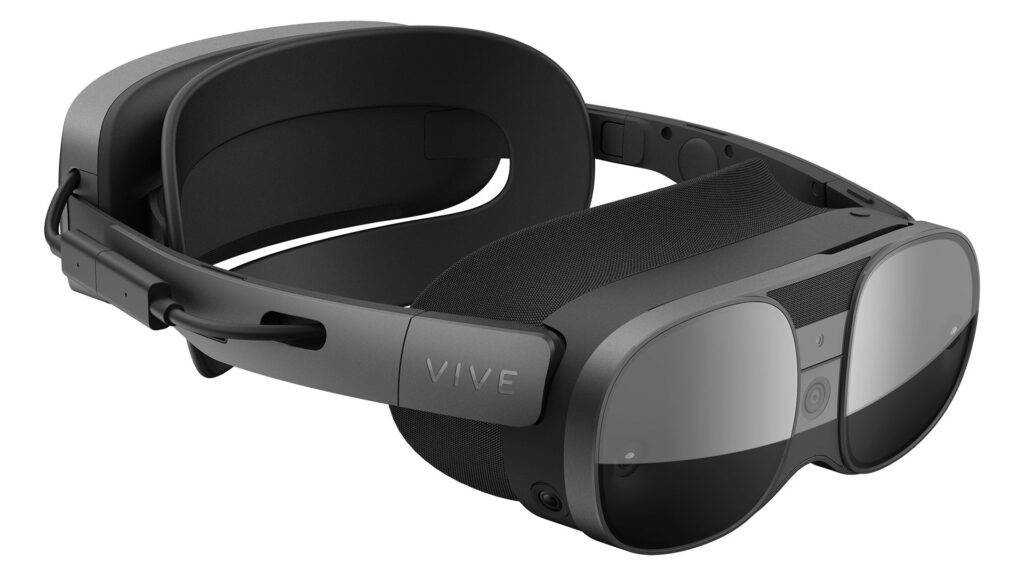
HTC has been a long-standing player in the VR/AR space, and the Vive XR Elite is their latest offering in the mixed-reality arena, directly competing with devices like the Vision Pro.
Price: The Vive XR Elite is priced around $1,099.
Features:
The Vive XR Elite supports both VR and AR experiences with pass-through AR mode.
It features 6DoF tracking, a high-quality 2K resolution per eye, and advanced hand tracking.
Powered by a Qualcomm Snapdragon XR2 chipset, it offers strong performance for both gaming and productivity applications.
The device is designed to be lightweight and comfortable, with a modular design to adapt to different use cases.
Pros:
More affordable than the Vision Pro, with robust VR and AR capabilities.
Strong focus on both consumer and enterprise use cases, offering a good balance between entertainment and productivity.
Standalone headset that doesn’t require a PC or console to operate.
Cons:
The resolution and field of view are not as high as the Apple Vision Pro, which boasts one of the most advanced displays in the market.
Lacks the same seamless integration with a major ecosystem (like Apple’s Vision Pro with macOS, iOS, etc.).
5. Pico 4
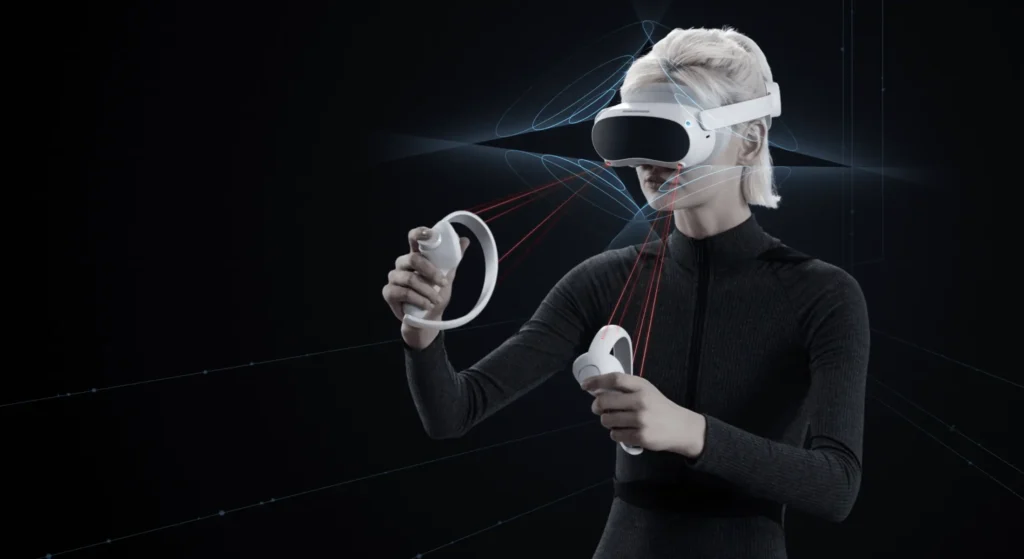
Pico, owned by ByteDance (TikTok’s parent company), is another strong competitor in the VR space, especially in markets outside the U.S.
Price: The Pico 4 is priced at around $399 for the base model.
Features:
A standalone VR headset with 4K display (2160 x 2160 per eye) and a wide 105-degree field of view.
Offers solid VR gaming performance and access to a growing library of content.
Lightweight and comfortable, with inside-out tracking and 360-degree tracking for full immersion.
Pros:
Much more affordable than the Vision Pro.
Great VR gaming experience and good visual performance.
Strong for standalone VR experiences without needing a PC or external sensors.
Cons:
No AR functionality, making it a VR-only device.
Lacks the high-end, mixed-reality features of the Vision Pro, such as integrated eye-tracking and advanced AR experiences.
More limited in terms of integration with other ecosystems or enterprise software.
